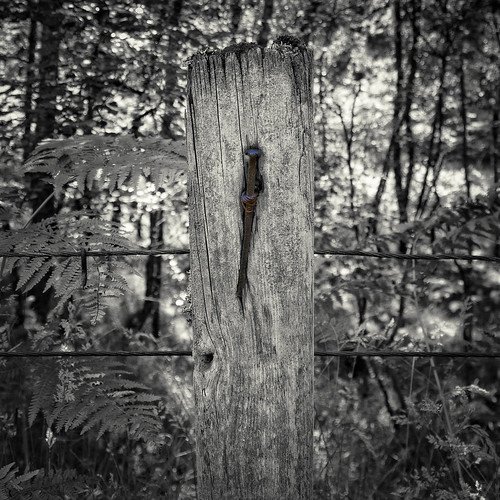N by immunostaining and western blotting [5]. Second, we used a rabbit polyclonal antibody (anti-acetyl-K40) raised against an acetylated peptide corresponding to the primary sequence of mouse a-tubulin. Both antibodies Homatropine methobromide chemical information detected little to no acetylated a-tubulin in untransfected COS-7 or PtK2 cell lysates (Figure 1A, lanes 1 and 2) but detected a strong band of K40acetylated tubulin in lysates from COS-7 and PtK2 cells expressing MEC-17 (Figure 1A, lanes 3 and 4), consistent with previous results [23,24]. Note that acetylated a-tubulin can be detected in untransfected COS-7 lysates upon loading more material whereas untransfected PtK2 cells contain only unacetylated (never modified) a-tubulin despite the A-196 presence of the K40 residue in an  a-tubulin sequence ([18] and data not shown). These results indicate that both antibodies specifically recognize the presence of acetyl-K40 in denatured a-tubulin. To generate highly acetylated or completely deacetylated atubulins, purified bovine brain tubulin was treated with recombinant MEC-17 or SIRT2 enzymes, respectively, as described [23,24,26]. Treatment with MEC-17 resulted in increased levels of acetyl-K40 whereas treatment with SIRT2 resulted in a complete loss of acetyl-K40 signal as determined by western blotting with both monoclonal (6-11B-1) and polyclonal (anti-acetyl-K40) antibodies (Figure 1B, lanes 2 and 3). Both acetylated and deacetylated tubulins polymerized into microtubules with no observable differences in polymerization dynamics or morphology as compared to microtubules polymerized from untreated purified brain tubulin (Figures 2, 4 and data not shown), consistent with previous reports [8,24,26,30]. These results confirm the generation of highly acetylated and completely deacetylated a-tubulin suitable for cryo-EM.Cryo-EM Localization of Acetyl-K40 on MicrotubulesFigure 2. 2D and 3D EM visualization of the 6-11B-1 Fab within the microtubule lumen. A-D) Microtubules polymerized from A,D) untreated B) MEC-17-treated (acetylated), or C) SIRT2-treated (deacetylated) tubulins were incubated with A-C) 6-11B-1 Fab fragments or D) GST-KHC motor domain and visualized after embedding in negative stain. The insets show expanded views of the boxed areas. White arrows in D) indicate kinesin-1 motors on the microtubule surface. Scale bars, 50 nm. E ) Side and minus end views of 3D helical reconstructions of vitrified ?microtubules. Visible density thresholds have been adjusted to levels comparable to docked ab-tubulin. All maps have been low-pass filtered to 22A resolution. E) Control microtubule without Fab labeling. F) Cross section of acetylated microtubule decorated with 6-11B-1 Fab (orange). The structure of the ab-tubulin dimer [30] has been docked into the right side of the density map (a-tubulin is shown in teal, b-tubulin is shown in purple). G) Cross section of deacetylated microtubule decorated with 6-11B-1 Fab (orange). doi:10.1371/journal.pone.0048204.g2D and 3D EM visualization of the 6-11B-1 Fab within the lumen
a-tubulin sequence ([18] and data not shown). These results indicate that both antibodies specifically recognize the presence of acetyl-K40 in denatured a-tubulin. To generate highly acetylated or completely deacetylated atubulins, purified bovine brain tubulin was treated with recombinant MEC-17 or SIRT2 enzymes, respectively, as described [23,24,26]. Treatment with MEC-17 resulted in increased levels of acetyl-K40 whereas treatment with SIRT2 resulted in a complete loss of acetyl-K40 signal as determined by western blotting with both monoclonal (6-11B-1) and polyclonal (anti-acetyl-K40) antibodies (Figure 1B, lanes 2 and 3). Both acetylated and deacetylated tubulins polymerized into microtubules with no observable differences in polymerization dynamics or morphology as compared to microtubules polymerized from untreated purified brain tubulin (Figures 2, 4 and data not shown), consistent with previous reports [8,24,26,30]. These results confirm the generation of highly acetylated and completely deacetylated a-tubulin suitable for cryo-EM.Cryo-EM Localization of Acetyl-K40 on MicrotubulesFigure 2. 2D and 3D EM visualization of the 6-11B-1 Fab within the microtubule lumen. A-D) Microtubules polymerized from A,D) untreated B) MEC-17-treated (acetylated), or C) SIRT2-treated (deacetylated) tubulins were incubated with A-C) 6-11B-1 Fab fragments or D) GST-KHC motor domain and visualized after embedding in negative stain. The insets show expanded views of the boxed areas. White arrows in D) indicate kinesin-1 motors on the microtubule surface. Scale bars, 50 nm. E ) Side and minus end views of 3D helical reconstructions of vitrified ?microtubules. Visible density thresholds have been adjusted to levels comparable to docked ab-tubulin. All maps have been low-pass filtered to 22A resolution. E) Control microtubule without Fab labeling. F) Cross section of acetylated microtubule decorated with 6-11B-1 Fab (orange). The structure of the ab-tubulin dimer [30] has been docked into the right side of the density map (a-tubulin is shown in teal, b-tubulin is shown in purple). G) Cross section of deacetylated microtubule decorated with 6-11B-1 Fab (orange). doi:10.1371/journal.pone.0048204.g2D and 3D EM visualization of the 6-11B-1 Fab within the lumen  of microtubulesTo probe for the positioning of acetyl-K40 within the microtubule architecture, we generated Fab fragments of the monoclonal antibody 6-11B-1 (Figure S1C) and used them to label microtubules polymerized from highly acetylated (MEC-17treated) tubulins. In a first step, we examined the labeled microtubules by negative stain EM and observed additional densities bound on the filaments (Figure 2B) as compared to unlabeled untreated microtubules (Figure 2A). T.N by immunostaining and western blotting [5]. Second, we used a rabbit polyclonal antibody (anti-acetyl-K40) raised against an acetylated peptide corresponding to the primary sequence of mouse a-tubulin. Both antibodies detected little to no acetylated a-tubulin in untransfected COS-7 or PtK2 cell lysates (Figure 1A, lanes 1 and 2) but detected a strong band of K40acetylated tubulin in lysates from COS-7 and PtK2 cells expressing MEC-17 (Figure 1A, lanes 3 and 4), consistent with previous results [23,24]. Note that acetylated a-tubulin can be detected in untransfected COS-7 lysates upon loading more material whereas untransfected PtK2 cells contain only unacetylated (never modified) a-tubulin despite the presence of the K40 residue in an a-tubulin sequence ([18] and data not shown). These results indicate that both antibodies specifically recognize the presence of acetyl-K40 in denatured a-tubulin. To generate highly acetylated or completely deacetylated atubulins, purified bovine brain tubulin was treated with recombinant MEC-17 or SIRT2 enzymes, respectively, as described [23,24,26]. Treatment with MEC-17 resulted in increased levels of acetyl-K40 whereas treatment with SIRT2 resulted in a complete loss of acetyl-K40 signal as determined by western blotting with both monoclonal (6-11B-1) and polyclonal (anti-acetyl-K40) antibodies (Figure 1B, lanes 2 and 3). Both acetylated and deacetylated tubulins polymerized into microtubules with no observable differences in polymerization dynamics or morphology as compared to microtubules polymerized from untreated purified brain tubulin (Figures 2, 4 and data not shown), consistent with previous reports [8,24,26,30]. These results confirm the generation of highly acetylated and completely deacetylated a-tubulin suitable for cryo-EM.Cryo-EM Localization of Acetyl-K40 on MicrotubulesFigure 2. 2D and 3D EM visualization of the 6-11B-1 Fab within the microtubule lumen. A-D) Microtubules polymerized from A,D) untreated B) MEC-17-treated (acetylated), or C) SIRT2-treated (deacetylated) tubulins were incubated with A-C) 6-11B-1 Fab fragments or D) GST-KHC motor domain and visualized after embedding in negative stain. The insets show expanded views of the boxed areas. White arrows in D) indicate kinesin-1 motors on the microtubule surface. Scale bars, 50 nm. E ) Side and minus end views of 3D helical reconstructions of vitrified ?microtubules. Visible density thresholds have been adjusted to levels comparable to docked ab-tubulin. All maps have been low-pass filtered to 22A resolution. E) Control microtubule without Fab labeling. F) Cross section of acetylated microtubule decorated with 6-11B-1 Fab (orange). The structure of the ab-tubulin dimer [30] has been docked into the right side of the density map (a-tubulin is shown in teal, b-tubulin is shown in purple). G) Cross section of deacetylated microtubule decorated with 6-11B-1 Fab (orange). doi:10.1371/journal.pone.0048204.g2D and 3D EM visualization of the 6-11B-1 Fab within the lumen of microtubulesTo probe for the positioning of acetyl-K40 within the microtubule architecture, we generated Fab fragments of the monoclonal antibody 6-11B-1 (Figure S1C) and used them to label microtubules polymerized from highly acetylated (MEC-17treated) tubulins. In a first step, we examined the labeled microtubules by negative stain EM and observed additional densities bound on the filaments (Figure 2B) as compared to unlabeled untreated microtubules (Figure 2A). T.
of microtubulesTo probe for the positioning of acetyl-K40 within the microtubule architecture, we generated Fab fragments of the monoclonal antibody 6-11B-1 (Figure S1C) and used them to label microtubules polymerized from highly acetylated (MEC-17treated) tubulins. In a first step, we examined the labeled microtubules by negative stain EM and observed additional densities bound on the filaments (Figure 2B) as compared to unlabeled untreated microtubules (Figure 2A). T.N by immunostaining and western blotting [5]. Second, we used a rabbit polyclonal antibody (anti-acetyl-K40) raised against an acetylated peptide corresponding to the primary sequence of mouse a-tubulin. Both antibodies detected little to no acetylated a-tubulin in untransfected COS-7 or PtK2 cell lysates (Figure 1A, lanes 1 and 2) but detected a strong band of K40acetylated tubulin in lysates from COS-7 and PtK2 cells expressing MEC-17 (Figure 1A, lanes 3 and 4), consistent with previous results [23,24]. Note that acetylated a-tubulin can be detected in untransfected COS-7 lysates upon loading more material whereas untransfected PtK2 cells contain only unacetylated (never modified) a-tubulin despite the presence of the K40 residue in an a-tubulin sequence ([18] and data not shown). These results indicate that both antibodies specifically recognize the presence of acetyl-K40 in denatured a-tubulin. To generate highly acetylated or completely deacetylated atubulins, purified bovine brain tubulin was treated with recombinant MEC-17 or SIRT2 enzymes, respectively, as described [23,24,26]. Treatment with MEC-17 resulted in increased levels of acetyl-K40 whereas treatment with SIRT2 resulted in a complete loss of acetyl-K40 signal as determined by western blotting with both monoclonal (6-11B-1) and polyclonal (anti-acetyl-K40) antibodies (Figure 1B, lanes 2 and 3). Both acetylated and deacetylated tubulins polymerized into microtubules with no observable differences in polymerization dynamics or morphology as compared to microtubules polymerized from untreated purified brain tubulin (Figures 2, 4 and data not shown), consistent with previous reports [8,24,26,30]. These results confirm the generation of highly acetylated and completely deacetylated a-tubulin suitable for cryo-EM.Cryo-EM Localization of Acetyl-K40 on MicrotubulesFigure 2. 2D and 3D EM visualization of the 6-11B-1 Fab within the microtubule lumen. A-D) Microtubules polymerized from A,D) untreated B) MEC-17-treated (acetylated), or C) SIRT2-treated (deacetylated) tubulins were incubated with A-C) 6-11B-1 Fab fragments or D) GST-KHC motor domain and visualized after embedding in negative stain. The insets show expanded views of the boxed areas. White arrows in D) indicate kinesin-1 motors on the microtubule surface. Scale bars, 50 nm. E ) Side and minus end views of 3D helical reconstructions of vitrified ?microtubules. Visible density thresholds have been adjusted to levels comparable to docked ab-tubulin. All maps have been low-pass filtered to 22A resolution. E) Control microtubule without Fab labeling. F) Cross section of acetylated microtubule decorated with 6-11B-1 Fab (orange). The structure of the ab-tubulin dimer [30] has been docked into the right side of the density map (a-tubulin is shown in teal, b-tubulin is shown in purple). G) Cross section of deacetylated microtubule decorated with 6-11B-1 Fab (orange). doi:10.1371/journal.pone.0048204.g2D and 3D EM visualization of the 6-11B-1 Fab within the lumen of microtubulesTo probe for the positioning of acetyl-K40 within the microtubule architecture, we generated Fab fragments of the monoclonal antibody 6-11B-1 (Figure S1C) and used them to label microtubules polymerized from highly acetylated (MEC-17treated) tubulins. In a first step, we examined the labeled microtubules by negative stain EM and observed additional densities bound on the filaments (Figure 2B) as compared to unlabeled untreated microtubules (Figure 2A). T.
